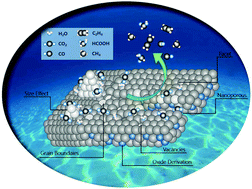Current progress of metallic and carbon-based nanostructure catalysts towards the electrochemical reduction of CO2
Abstract
The gradual increase in atmospheric carbon dioxide concentration has led to a series of environmental problems such as global warming; therefore, the large-scale conversion of carbon dioxide is urgent. In this regard, the electrochemical CO2 reduction (ECR) technology can reduce the greenhouse gas CO2 to low-carbon fuels and economically valuable chemicals, which is a promising method to achieve carbon cycle termination. Catalysts are critical for ECR due to high activation energy requirements and the endothermic nature of the reaction. This review describes the recent advances in the design of nanostructured inorganic catalysts for ECR, strategies to improve the catalytic performance of these catalysts, and particularly the structure–performance relationship of catalysts. After a brief introduction to the background and basic principles of ECR, we have summarized the crucial factors (size, morphology, crystal facets, defects, interface, surface, and oxide derivation) determining the performance of CO2 electroreduction. Finally, we have discussed the methods to improve the reaction efficiency and selectivity of catalysts and introduced the prospects for their future developments.

- This article is part of the themed collection: 2019 Inorganic Chemistry Frontiers Review-type Articles


 Please wait while we load your content...
Please wait while we load your content...